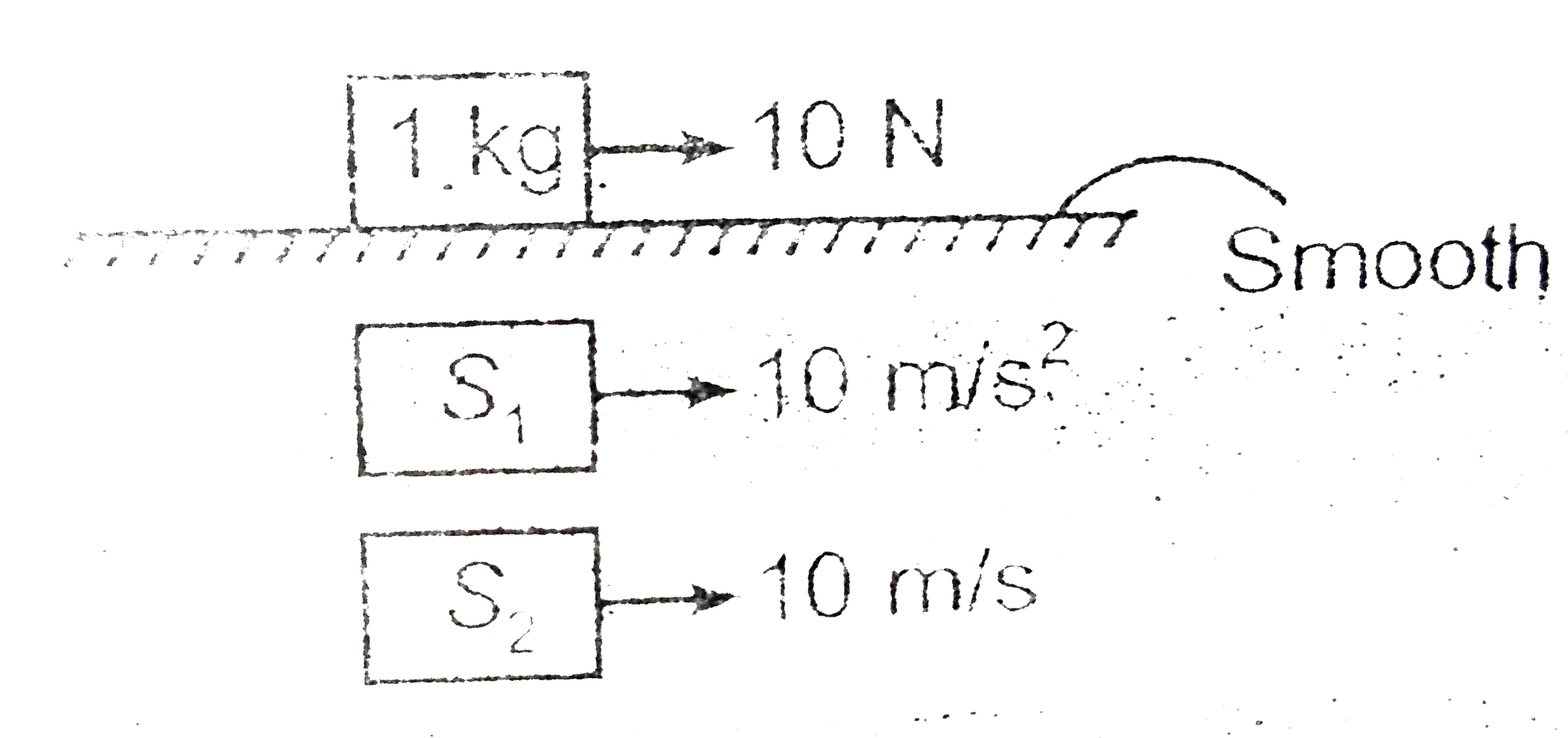If particle stays at rest as seen from a frame of reference
the frame may be inertial and a resultant force acts on it
the frame may be non inertial and Freal=−Fpseudo
the frame may be non inertial but a resultant force acts on it
the frame must always be inertial
The correct Answer is:B
Step by step video & image solution for If particle stays at rest as seen from a frame of reference by Physics experts to help you in doubts & scoring excellent marks in Class 12 exams.
Updated on:21/07/2023Topper's Solved these Questions
- LAWS OF MOTIONBOOK - AAKASH SERIESCHAPTER - LAWS OF MOTIONEXERCISE - EXERCISE - II
136 Videos
- LAWS OF MOTIONBOOK - AAKASH SERIESCHAPTER - LAWS OF MOTIONEXERCISE - PRACTICE EXERCISE
106 Videos
- LAWS OF MOTIONBOOK - AAKASH SERIESCHAPTER - LAWS OF MOTIONEXERCISE - Application
6 Videos
- GEOMETRICAL OPTICSBOOK - AAKASH SERIESCHAPTER - GEOMETRICAL OPTICSEXERCISE - ADDITIONAL PRACTICE EXERCISE (LEVEL-II PRACTICE SHEET (ADVANCED) INTEGER TYPE QUESTIONS)
10 Videos
- LOGIC GATESBOOK - AAKASH SERIESCHAPTER - LOGIC GATESEXERCISE - Exercise (Very Short Answer)
10 Videos
Similar Questions
A particle stays at rest as seen in a frame. We can concude that :
View SolutionA particle is found to be at rest when seen from a frame S1 and moving with a constant velocity when seen from another frame S2. Select the possible options :
View Solution(A) : A particle is found to be at rest when seen from a frame S,and moving with a constant velocity when seen from another frame S2. We can say both the frames are inertial
( R) : All frames moving uniformly with respect to an inertial frame are themselves inertial
View SolutionStatement I: A particle is found to be a rest when seen from a frame S1 and moving with a constant velocity when seen from another frame S2. We can say both the frames are inertial.
Statement II: All frames moving uniformly with respect to an inertial frame are themselves inertial.
View SolutionA particle is found to be at rest when seen from a frame S1 and moving with a constant velocity when seen from another frame S2
a) Both the frames are inertial
b) Both the frames are non inertial
c) S1 is inertial and S2 is non inertial
d) S1 is non inertial and S2 is inertial
View SolutionA particle is found to be at rest when seen from a frame S1 and moving with a constant velocity when seen from another frame S2
(a) Both the frames are inertial
(b) Both the frames are non inertial
(c ) S1 is inertial and S2 is non inertial
(d) S1 is non inertial and S2 is inertial
View SolutionConsider the following two statements:
A The linear momentum of a particle is independent of the frame of reference.
B. The kinetic energy of a particle is independent of the frame of reference
View SolutionA person applies a constant force →F on a particle of mass m and finds tht the particle movs in a circle of radius r with a uniform speed v as seen from an inertial frame of reference.
View SolutionThe acceleration of a particle is zero as measured from an inertial frame of reference. Can we conclude that no force acts on the particle?
View SolutionA constatnt force of 10 N act on a block as shown in figure intal velocity of the particle is zero. It is observed from three frames of reference S1,S2 and ground. The frame S1 start from rest and move with constnat acceleration 10m/s. The frames S1andS2 and particle start moving simultaneously at t=0.

The rate at which work is done by constant force on the particle is always non-negative when observed fom
View Solution
